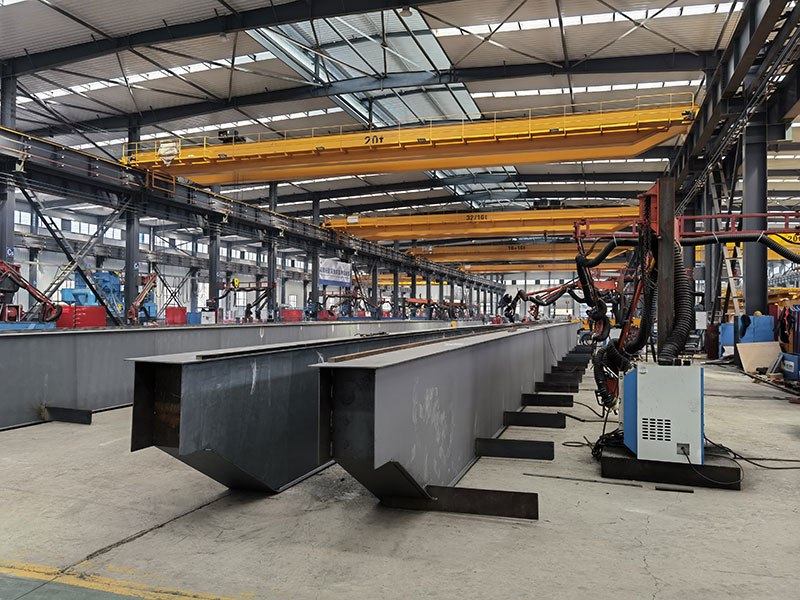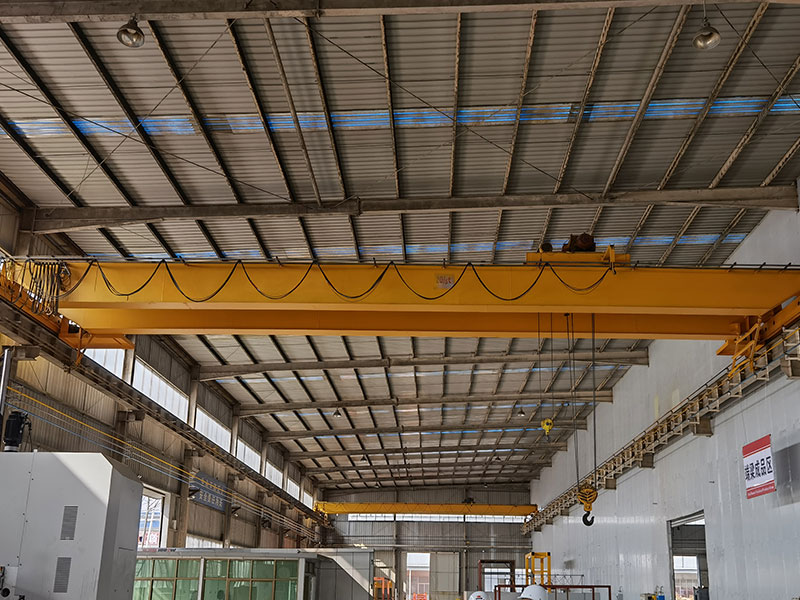Overhead cranes are essential equipment in various industries, enabling the safe and efficient movement of heavy loads. When it comes to heavy lifting tasks, a 20-ton overhead crane is a popular choice due to its versatility and capacity to handle substantial loads. However, selecting the right configuration of a 20-ton overhead crane can be a complex task, as there are several different options available, each tailored to specific applications. In this article, we will explore the various 20-ton overhead crane configurations and provide guidance on how to choose the one that best suits your operational requirements.

Single Girder Overhead Crane
A single girder 20 ton overhead crane for sale features a single beam that supports the hoist and trolley. This configuration is commonly used in light to medium-duty applications and is more cost-effective compared to double girder cranes. Single girder cranes are suitable for facilities with limited headroom and are ideal for tasks with relatively moderate load capacities.
Double Girder Overhead Crane
A double girder overhead crane utilizes two girders that support the hoist and trolley, providing higher lifting capacity and increased stability. This configuration is ideal for heavy-duty applications and scenarios where larger spans and higher hook heights are required. Double girder cranes are commonly used in steel mills, shipyards, and other industries that handle large and bulky loads.
Top Running Overhead Crane
In a top-running overhead crane, the crane travels on top of rails mounted on the building’s structure. This configuration offers higher hook heights and greater lifting capacities. It is suitable for situations where the available headroom is limited, as the crane does not occupy space below the runway.
Under Running Overhead Crane
An under-running overhead crane runs on rails installed on the bottom flange of the crane girder, allowing the crane to travel beneath the existing building structure. This configuration is ideal for facilities with limited overhead space and can be cost-effective compared to top-running cranes.
Single Speed vs. Variable Speed
Overhead cranes can be equipped with either single-speed or variable-speed controls. Single-speed cranes offer straightforward operations and are typically more budget-friendly. On the other hand, variable-speed cranes provide precise control, smooth acceleration, and deceleration, which can be beneficial for delicate or intricate lifting tasks.

Electric Wire Rope Hoist vs. Electric Chain Hoist
The choice between an electric wire rope hoist and an electric chain hoist depends on the application’s requirements. Electric wire rope hoists are suitable for heavy-duty lifting tasks, while electric chain hoists are ideal for lighter loads and repetitive lifting operations. Consider the load capacity and lifting frequency when deciding between these hoist options.
Single Pendant Control vs. Radio Remote Control
The control system of the overhead crane can impact its efficiency and ease of operation. A single pendant control allows the operator to control the crane from a wired pendant station, while a radio remote control provides the flexibility to operate the crane from a distance, enhancing safety and visibility during lifting operations.
Indoor vs. Outdoor Use
If your crane will be used outdoors, it must be designed to withstand various weather conditions. Outdoor double girder overhead cranes require additional protection against corrosion and weather elements, making weatherproofing and corrosion-resistant coatings crucial factors to consider.
Automation and Smart Features
Modern overhead cranes can be equipped with automation and smart features that enhance productivity and safety. Some advanced options include anti-collision systems, load monitoring, and real-time diagnostics. Evaluate whether such features are essential for your operations and if they justify the additional cost.
Customization Options
Different industries and applications have unique requirements. Some manufacturers offer customization options that allow you to tailor the crane to your specific needs. Whether it’s adjusting the span, height, or controls, exploring customization possibilities can help you optimize the crane’s performance for your facility.
How to Select the Right 20-Ton Overhead Crane
Determine Your Lifting Needs: Assess the average load weight, frequency of lifts, and required span and height to understand the crane’s lifting capacity and size you need.
Consider Space and Environment: Evaluate the available headroom, runway length, and any other space limitations in your facility. Additionally, consider whether the crane will be used indoors or outdoors to determine the required weatherproofing and corrosion protection.
Evaluate Duty Cycle: Determine the duty cycle of the crane, which refers to the frequency and duration of crane usage. Select a crane that is designed to handle your specific duty cycle requirements.
Safety Features: Prioritize safety by considering features such as overload protection, limit switches, and anti-collision systems. Safety should always be a paramount concern in crane selection.
Budget Considerations: Determine your budget and look for configurations that meet your operational needs without compromising safety and quality.
Work with a Reputable Manufacturer: Choose a reputable overhead crane manufacturer with a track record of delivering reliable and high-quality equipment. Manufacturers with experience and positive customer feedback are more likely to provide excellent service and support.
Conclusion
Selecting the right 20-ton overhead crane configuration requires a careful analysis of your lifting needs, operational requirements, and available space. Consider factors such as the type of girder, running configuration, speed controls, hoist type, and safety features. By understanding your specific needs and evaluating the various configurations available, you can make an informed decision that ensures the smooth and efficient lifting operations in your facility. Work with a trusted manufacturer to get a high-quality overhead crane that meets your requirements and adheres to industry standards for safety and performance.